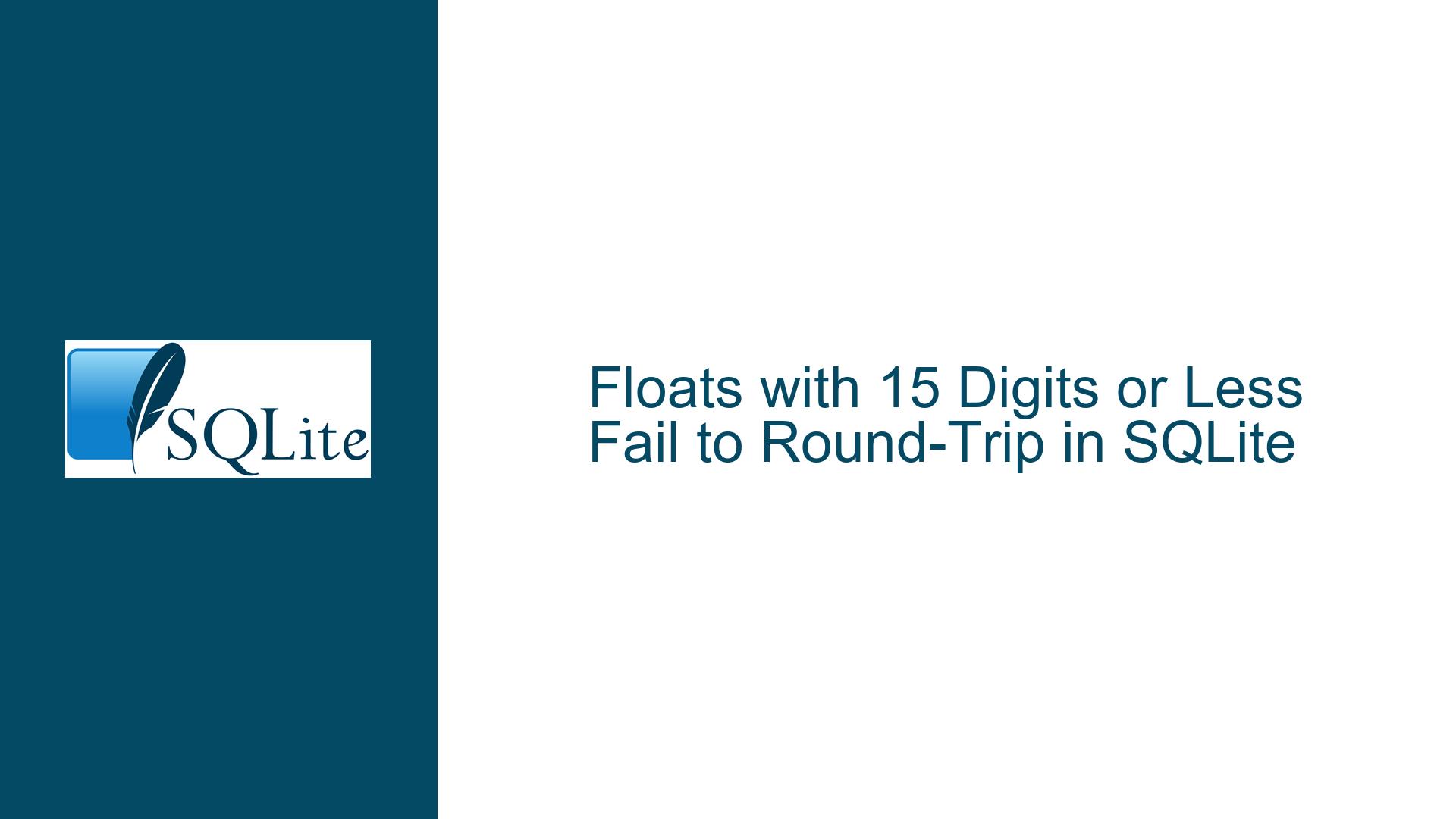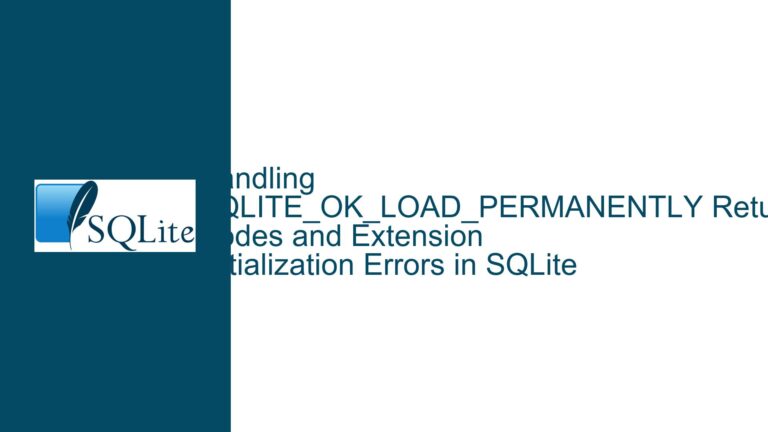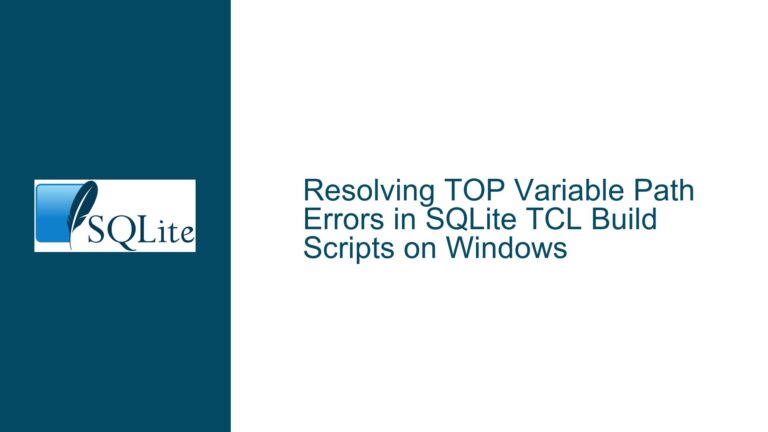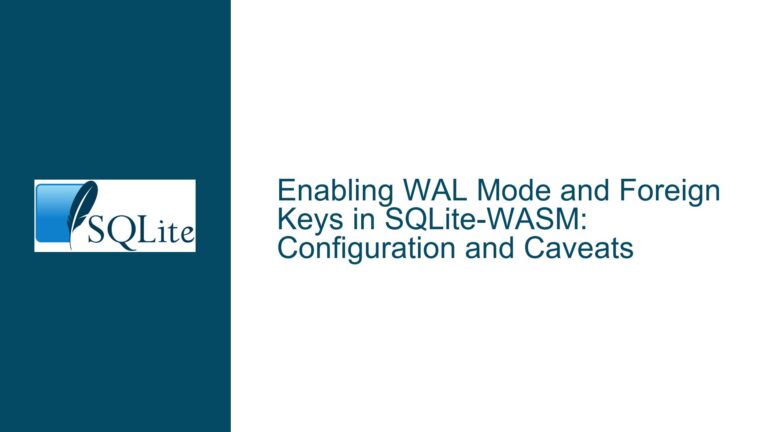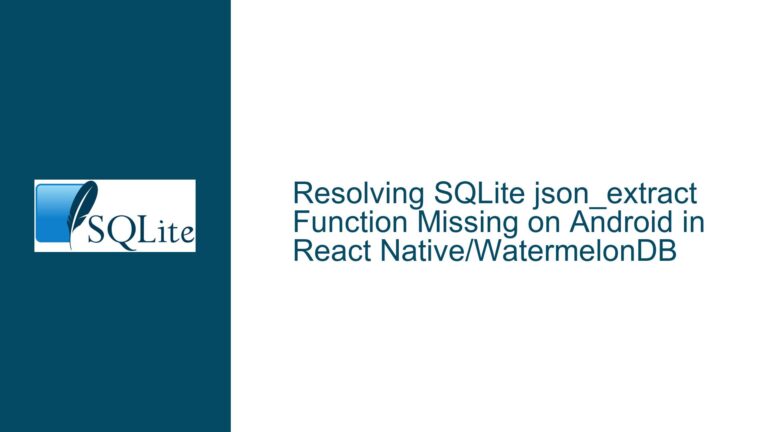Floats with 15 Digits or Less Fail to Round-Trip in SQLite
Understanding the Float Round-Trip Issue in SQLite
The core issue revolves around the inability of certain floating-point numbers with 15 digits or less to round-trip correctly in SQLite. A round-trip, in this context, refers to the process of writing a floating-point number to the database and then reading it back without any loss of precision. This issue is particularly problematic for applications that rely on high precision for numerical data, such as financial systems, scientific computations, or any domain where data integrity is critical.
SQLite stores floating-point numbers using the IEEE 754 standard, which is a widely adopted format for representing real numbers in binary. However, the binary representation of floating-point numbers can sometimes lead to precision issues when converting between binary and decimal formats. This is because not all decimal numbers can be represented exactly in binary, and vice versa. The specific problem here is that some 15-digit decimal numbers, when stored in SQLite, do not retain their exact value upon retrieval.
The issue is not unique to SQLite; it is a fundamental challenge in computer science due to the inherent limitations of binary floating-point arithmetic. However, the discussion highlights that SQLite could potentially mitigate this issue by adopting a different binary-to-decimal conversion algorithm. The current algorithm, while efficient, does not guarantee perfect round-tripping for all 15-digit decimal numbers. This limitation is particularly noticeable when dealing with numbers that require high precision.
The implications of this issue are significant. For instance, in a financial application, even a minor discrepancy in floating-point values could lead to incorrect calculations, such as interest accruals or currency conversions. Similarly, in scientific applications, small errors in data could compromise the validity of experiments or simulations. Therefore, understanding the root cause of this issue and exploring potential solutions is crucial for developers working with SQLite in precision-sensitive domains.
Why SQLite’s Current Implementation Fails to Ensure Round-Tripping
The primary reason SQLite’s current implementation fails to ensure round-tripping for certain 15-digit floats lies in the binary-to-decimal conversion algorithm it employs. This algorithm, while optimized for performance and minimal library size, does not guarantee exact representation of all decimal numbers. The trade-off between efficiency and precision is a common theme in database design, and SQLite has historically prioritized speed and compactness over perfect numerical accuracy.
One of the key factors contributing to this issue is the use of the Visual C runtime library for floating-point conversions. The Visual C library, like many other runtime libraries, uses a binary-to-decimal conversion algorithm that is designed to be fast and memory-efficient. However, this algorithm does not always produce the most accurate results, especially for numbers with 15 or fewer decimal digits. This is because the algorithm truncates or rounds numbers during conversion, leading to small but noticeable discrepancies.
Another factor is the limited precision of the IEEE 754 double-precision floating-point format, which SQLite uses to store REAL values. This format provides approximately 15-17 decimal digits of precision, but not all 15-digit decimal numbers can be represented exactly. When a number cannot be represented exactly, it is approximated, which can lead to round-trip failures. For example, the decimal number 0.1 cannot be represented exactly in binary, leading to small errors when it is stored and retrieved.
The decision to stick with the current algorithm is also influenced by the desire to keep the SQLite library small and fast. Implementing a more accurate binary-to-decimal conversion algorithm would require additional code, which would increase the size of the library and potentially slow down operations. For many applications, the current level of precision is sufficient, and the trade-off is considered acceptable. However, for applications that require higher precision, this limitation can be a significant drawback.
Addressing the Float Round-Trip Issue: Solutions and Workarounds
While the float round-trip issue in SQLite is a challenging problem, there are several strategies that developers can employ to mitigate its impact. These strategies range from modifying the database schema to using external tools for precise numerical handling. Each approach has its own trade-offs, and the best solution depends on the specific requirements of the application.
One approach is to avoid using floating-point numbers altogether for precision-sensitive data. Instead, developers can use integers or fixed-point decimal representations. For example, financial applications often store monetary values as integers representing cents, rather than using floating-point numbers. This approach eliminates the risk of rounding errors and ensures exact representation of values. However, it requires careful handling of decimal places and may not be suitable for all types of numerical data.
Another approach is to use SQLite’s TEXT storage class for numerical data. By storing numbers as strings, developers can ensure that the exact decimal representation is preserved. However, this approach has its own drawbacks, such as increased storage requirements and the need for additional processing to convert between text and numeric formats. It also limits the ability to perform arithmetic operations directly on the data.
For applications that require high precision and must use floating-point numbers, one workaround is to use an external library or tool for precise numerical handling. For example, the GNU MPFR library provides arbitrary-precision floating-point arithmetic, which can be used to ensure accurate round-tripping of decimal numbers. However, integrating such a library with SQLite requires significant effort and may not be practical for all applications.
Another potential solution is to modify SQLite’s binary-to-decimal conversion algorithm to improve accuracy. While this would require changes to the SQLite source code, it could provide a more robust solution for applications that require high precision. However, as noted in the discussion, this approach would increase the size of the library and potentially slow down operations, which may not be acceptable for all use cases.
In conclusion, the float round-trip issue in SQLite is a complex problem with no one-size-fits-all solution. Developers must carefully consider the specific requirements of their application and choose the approach that best balances precision, performance, and ease of implementation. By understanding the root causes of the issue and exploring the available solutions, developers can make informed decisions and ensure the integrity of their numerical data.
